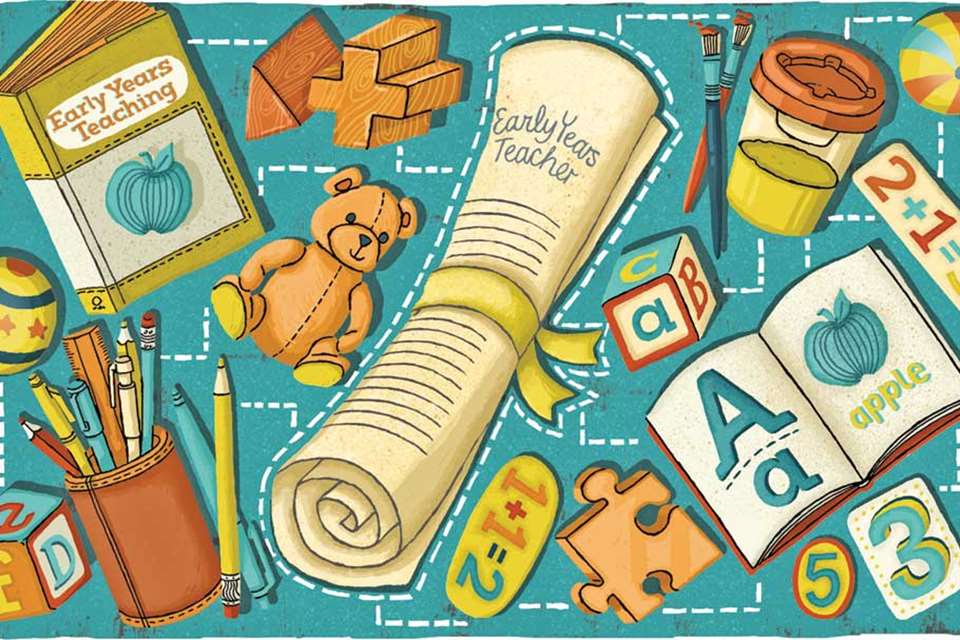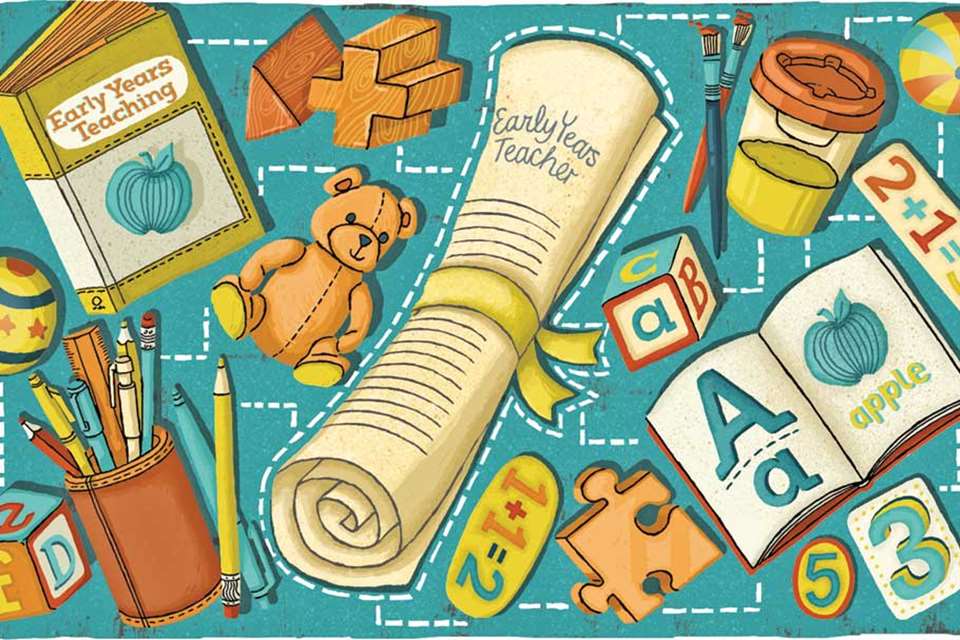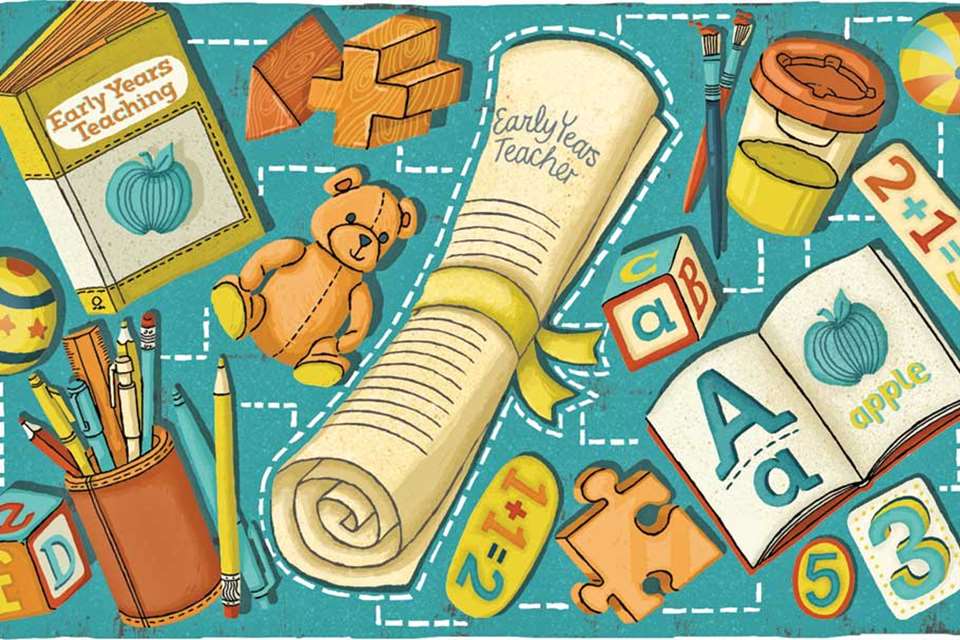Early Years Teacher: Standard 7 - Sharpen your focus on children's welfare
Karen Hart
Monday, April 7, 2014
Karen Hart investigates Standard 7 in detail, considering the ways in which Early Years Teachers should be proactive and accountable when it comes to children's health and safety.

STANDARD 7
7. Safeguard and promote the welfare of children, and provide a safe learning environment
Standard 7 requires early years professionals to illustrate their knowledge of child protection issues and policies and also consider, in detail, how they can be proactive in the promotion of child welfare requirements, policies and procedures.
SUPPORTING STATEMENTS
7.1 Know and act upon the legal requirements and guidance on health and safety, safeguarding and promoting the welfare of the child
This area of Standard 7 asks students to demonstrate a detailed knowledge of the legal requirements concerning all areas of child welfare, which should be covered to a great extent through policies currently in place within your setting.
Specific areas to look at here
- Ensure all adults working with children have the necessary qualifications and safety checks have been completed.
- Ensure all indoor and outdoor toys and equipment are safe and fit for purpose.
- Maintain up-to-date records on all children in your setting - consult with parents/carers regularly.
- Ensure adult-to-child ratios are within the legal requirements.
- Maintain up-to-date health and safety, and child protection, policies.
- Ensure risk assessment procedure is understood by all members of staff.
- Ensure health and safety/child protection training is revised on a regular basis.
- Ensure parents/carers are kept well informed of policies and procedures in your setting and of your setting's complaints procedure.
- Be familiar with your setting's policy on children arriving or becoming unwell during their time with you.
- Be familiar with your setting's policy on behaviour management.
7.2 Establish and sustain a safe environment and employ practices that promote children's health and safety
Be sure to see the big picture here; remember to include all the times when children will be in your care, such as on outings or during dropping-off and picking-up procedures. Try to get into the habit of taking regular inspections of all aspects of your setting, including the premises itself, looking at areas including the following.
- Pull cords on window blinds that could possibly become tangled round a child's neck.
- Hot drinks - are staff carrying hot drinks near children?
- Are toys regularly checked? Are there any broken or damaged sections that could hurt a child, and are they regularly sanitised?
- Is the setting arranged in such a way that it provides a safe area for play?
- If children appear to frequently trip over equipment that is regularly placed in the same area of the room, such as a slide or climbing equipment, raise your concerns and suggest changing the layout. When looking at both indoor and outdoor large play equipment, check all opening sections are large enough to avoid body parts becoming trapped.
- Ensure you and all staff are informed of all emergency procedures.
'Safety sweeps'
Many pre-schools and nurseries carry out 'safety sweeps' on a daily basis. These consist of a list of potential risk areas within a setting, which are checked to ensure they meet health and safety requirements.
You could carry out your own regular safety sweeps to demonstrate your ability to sustain a safe environment and employ practices that promote children's health and safety. Some areas of potential concern you may like to check on could be:
- correct staff/child ratios
- visitors identified and signed in/out
- room and water temperatures correct
- food - all consumables in date
- window locks working
- toilets working and equipped.
7.3 Know and understand child protection policies and procedures, recognise when a child is in danger or at risk of abuse, and know how to act to protect them
To fulfil the requirements of the final area of Standard 7, students need to demonstrate an ability to recognise signs of potential child abuse, plus a confidence in knowing the appropriate action to follow in all areas of child protection as follows:
- physical abuse
- emotional abuse
- sexual abuse
- neglect
- historical abuse.
It is extremely important that all early years professionals make themselves aware of all procedures involving the detection and reporting of child protection issues. Remember that you must always put the welfare of children first - and act without delay.
Having a well thought out, working child protection policy in your setting is vital, as is being aware of potential signs of abuse and a knowledge of the designated person dealing with child protection issues in your setting.
Familiarise yourself with your setting's child protection policy, and don't feel afraid to speak out if you feel there are any areas that could be improved.
General points to be covered in all child protection policies
Communication - among everyone involved in the organisation, including parents. Explain why a policy is important and be prepared to answer any questions that may arise.
Training - this should be included in induction training, before contact with children, and updated as required - with specific training for child protection leaders.
Monitoring and supervision - make child protection of paramount importance when reviewing work progress.
Recording and information sharing - is additional training needed here?
Recruitment safety checks - have all employees had the right type of DBS check? An enhanced DBS check is required for all employees working in a pre-school setting
Allegations or incidents - if there is an allegation or incident of child abuse concerning your organisation, how will this be addressed? Think about the concerns of staff, parents and children.
Photography - a simple consent form will be needed if you plan to take, or allow parents to take, photographs of children in your care.
Confidentiality - as an early years professional, you will inevitably come into contact with confidential information concerning both the children in your care and their family members. Make sure that you familiarise yourself with your group's policy on information sharing.
Work with colleagues
Denise Reardon, programme director of Early Years Teacher Status at Canterbury Christ Church University, offers the following advice for students looking at Standard 7.
'Once you unpick Standard 7, you start to realise how accountable the Early Years Teacher (EYT) is for the safeguarding and the promotion of the welfare of the children in their care through the provision of a safe, healthy learning environment.
'It's important to bear in mind that the Safeguarding and Welfare Requirements, specified in the statutory guidance for the Early Years Foundation Stage, acknowledge that, "Children learn best when they are healthy, safe and secure, when their individual needs are met, and when they have positive relationships with the adults caring for them".
'Child protection is a part of safeguarding and promoting welfare. It refers to the activity that is undertaken to protect specific children who are suffering, or are likely to suffer, significant harm.
'Being very mindful about the serious nature of safeguarding and promoting the welfare of children aged 0-5 years, EYTs must ensure that their theory and practice interface is real, and used to:
- establish and sustain safe and healthy environments that promote the well-being and welfare of all children (S7.1)
- apply their knowledge and understanding in practice concerning the legal requirements and guidance on health and safety, safeguarding and promoting the welfare of the child (S7.2)
- recognise in practice when a child is in danger or at risk of abuse, and know how to act to protect them. (S7.3).
'In summary, your role as an EYT is to understand your accountability, to act proactively, and work with colleagues to safeguard children and apply policies, procedures and protocols to keep children safe.
'You must recognise the signs and symptoms of actual or potential harm and recognise when children are in danger or at risk, and keep yourself and colleagues up to date with changes in the legal requirements.
You need to know how to act to safeguard children, including liaising with and referring matters to professionals working in children's social care. You also need to ensure that colleagues and children respect the environment, understand dangers and know how to act to keep their wards/themselves safe.'
Further information
- A list of requirements covering area 7.1 can be found at www.ofsted.gov.uk/resources/factsheet-childcare-records-policies-and- notification-requirements-of-early-years-register
- Working Together to Safeguard Children www.gov.uk/government/publications/ working-together-to-safeguard-children
- Teachers' Standards (Early Years), www.gov.uk/government/uploads/system/uploads/attachment_data/file/ 211646/Early_Years_Teachers__Standards.pdf
The final part of this series, in Nursery World 5-18 May, will focus on Standard 8.










